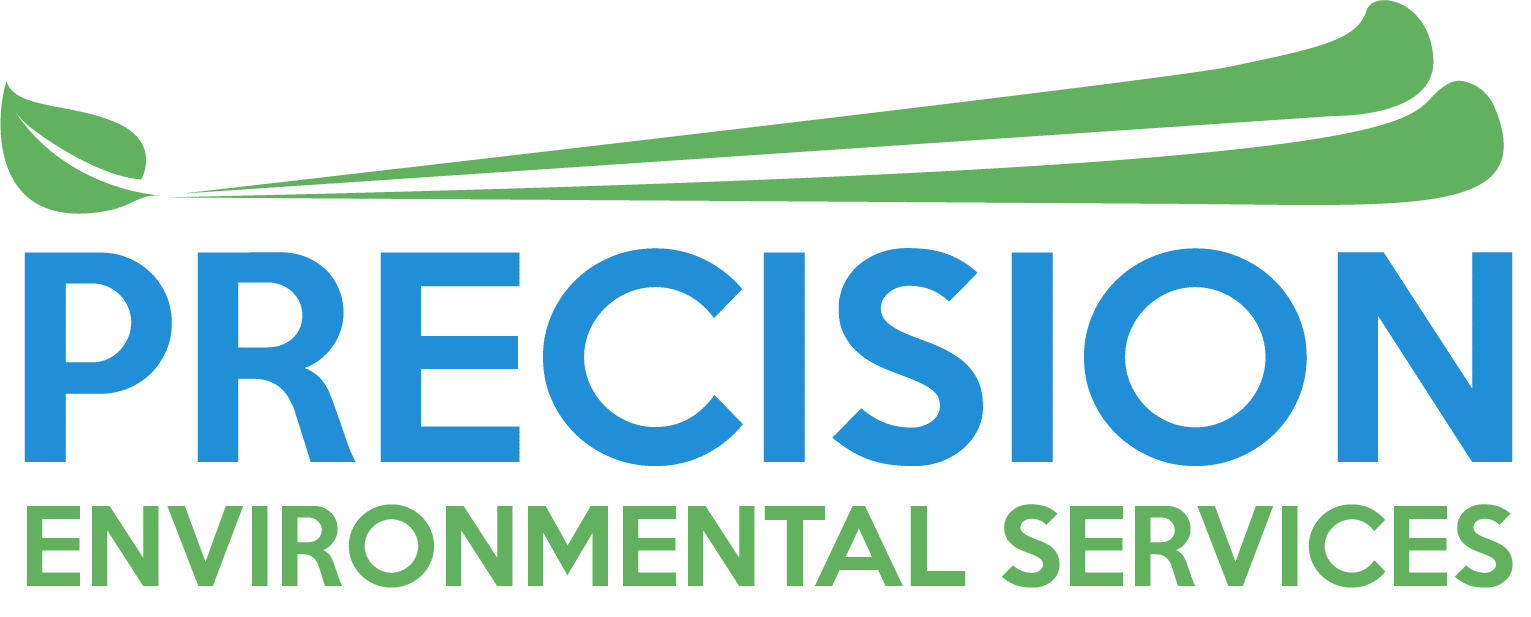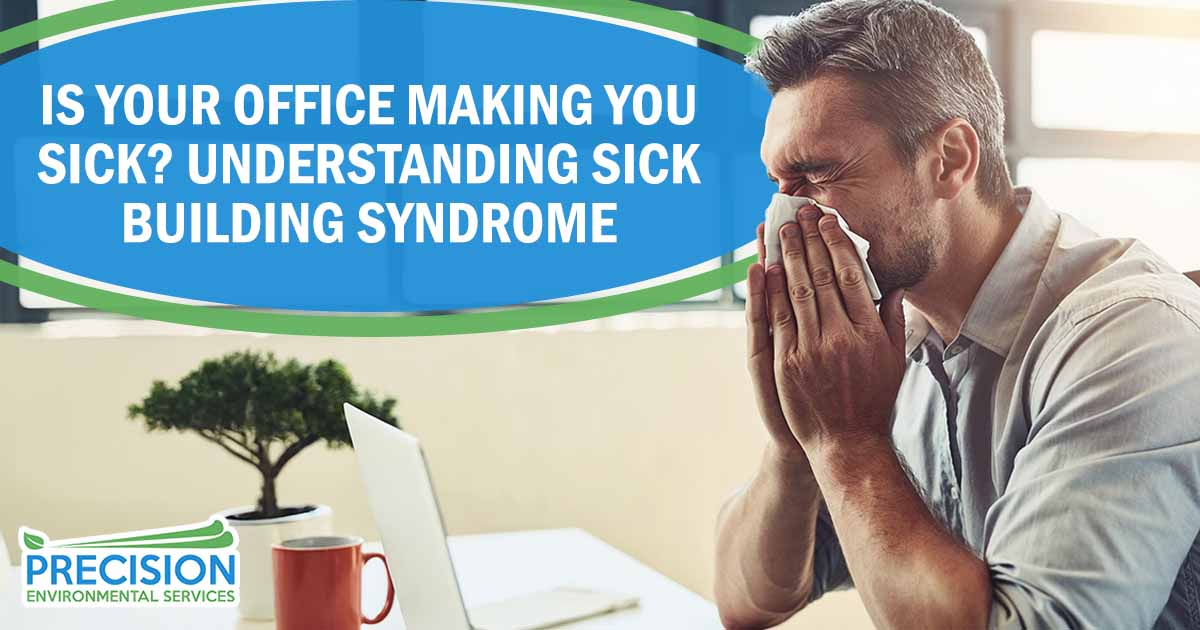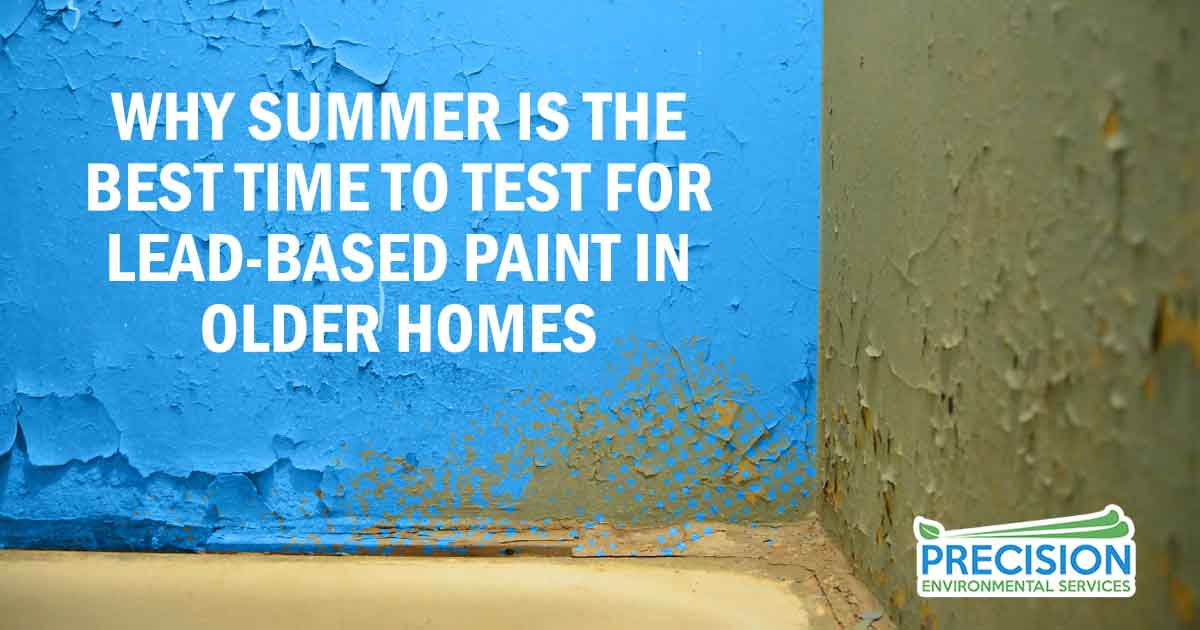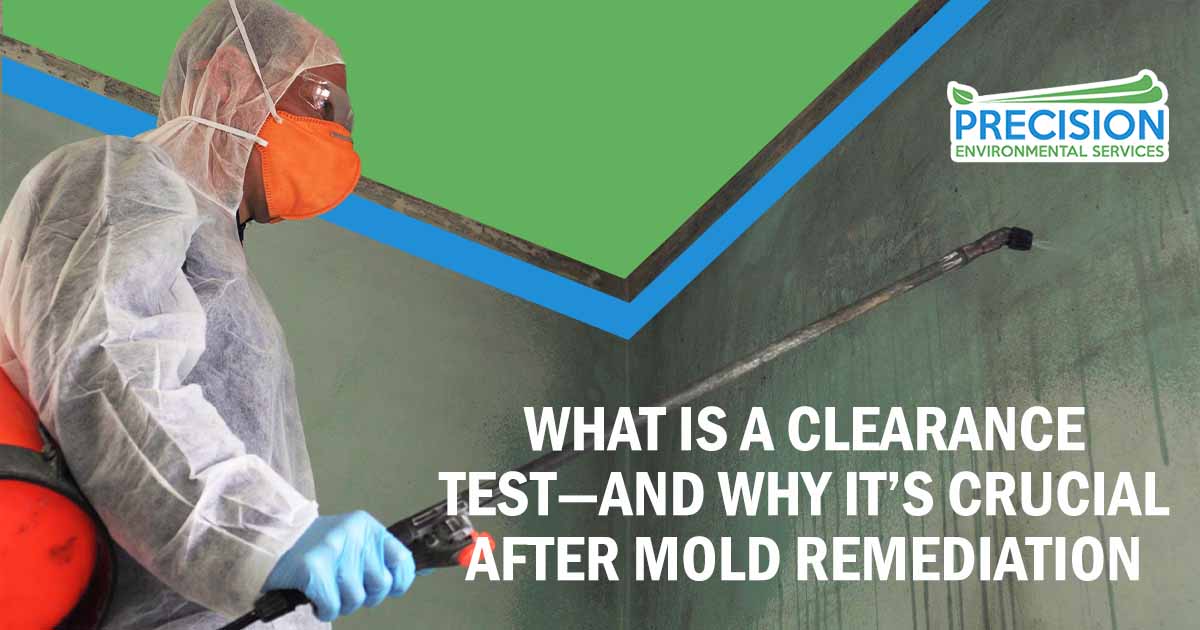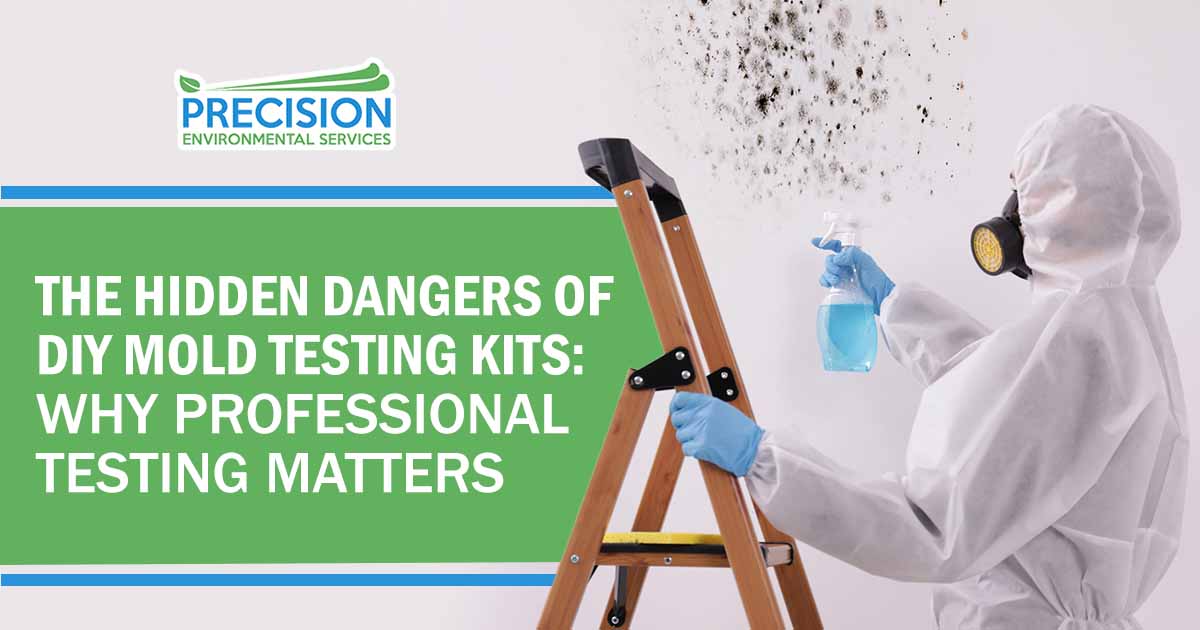Employees who spend hours in an office building may begin to experience recurring health issues, such as fatigue, headaches, or throat irritation. In many cases, these symptoms are linked not to a virus or personal condition—but to the environment itself. This pattern may point to Sick Building Syndrome (SBS), a condition that affects indoor spaces with poor air quality. Businesses experiencing such symptoms among their teams should consider professional indoor air quality testing to assess whether their workplace may be contributing to illness and decreased productivity.
What Is Sick Building Syndrome?
Defining Sick Building Syndrome (SBS)
Sick Building Syndrome is a term used to describe health issues and discomfort experienced by people who spend extended time in a specific building. The symptoms are often widespread among occupants and tend to improve when individuals leave the building. Unlike clearly defined building-related illnesses caused by bacteria or chemicals, SBS refers to situations where no specific illness or contaminant is initially identified, yet symptoms persist across multiple individuals. This condition is commonly associated with poor indoor air quality (IAQ), inadequate ventilation, and the buildup of indoor pollutants. SBS is a concern for business owners, facility managers, and property managers because it can affect employee well-being and operational performance.
Recognizing the Symptoms of Sick Building Syndrome
People in buildings affected by SBS often report similar symptoms, including:
- Headaches or dizziness
- Fatigue or difficulty concentrating.
- Dry or irritated eyes, nose, and throat
- Nausea or a general feeling of being unwell
- Itchy skin or rashes
These symptoms usually occur while inside the building and improve soon after leaving. Due to the broad and vague nature of the symptoms, SBS can often go unnoticed or be misattributed to seasonal illnesses or personal health issues. Patterns of complaints from multiple employees should prompt a closer look at the indoor environment.
Common Environmental Causes of Sick Building Syndrome
Inadequate Ventilation
One of the most common contributors to Sick Building Syndrome is poor ventilation. When a building’s HVAC system does not bring in enough fresh air or circulate it effectively, indoor pollutants accumulate. In older buildings or sealed environments—common in many offices—air recirculates without proper filtration, leading to higher concentrations of carbon dioxide, odors, and irritants. Mechanical ventilation systems that are not regularly maintained may also harbor contaminants, such as dust, mold spores, and bacteria. When airflow is insufficient or uneven, occupants are more likely to experience the physical symptoms associated with Sick Building Syndrome (SBS).
Presence of Indoor Pollutants
Another key factor in SBS is the presence of indoor pollutants. Common sources include:
- Mold and mildew in walls, ceilings, or ductwork
- Volatile Organic Compounds (VOCs) released by carpets, office furniture, adhesives, and cleaning products
- Dust and allergens from high-traffic areas or uncleaned surfaces
These substances can irritate the respiratory system, skin, and eyes, especially in poorly ventilated environments. Offices that use harsh cleaning chemicals or are undergoing renovations may also expose occupants to elevated VOC levels.
Uncontrolled Humidity and Temperature
Humidity and temperature levels play a critical role in indoor air quality. High humidity can promote mold growth, while low humidity may dry out mucous membranes and skin. Similarly, inconsistent temperatures or lack of temperature control can cause discomfort, reduce concentration, and worsen SBS symptoms. Buildings without automated climate control or regular HVAC inspections may struggle to maintain the right balance.
Where Sick Building Syndrome Is Most Likely to Occur
Vulnerable Commercial Properties
Sick Building Syndrome can affect nearly any type of commercial building; however, specific properties are more susceptible. Older office buildings, especially those with outdated HVAC systems or insufficient air exchange rates, tend to have higher occurrences of poor indoor air quality. These buildings may also have hidden moisture problems, which can contribute to mold growth in walls, ceilings, and ventilation systems. Multi-tenant buildings, such as medical complexes, call centers, and government offices, are also susceptible. When spaces are densely occupied and share ventilation systems, contaminants can circulate throughout multiple suites or floors without being detected. Newer buildings are not immune. Spaces recently renovated or furnished may release high levels of VOCs due to new carpet, paint, adhesives, or treated furniture—raising the risk of SBS if not adequately ventilated.
Shared Workspaces and High-Occupancy Areas
Environments where many people gather or work nearby are especially vulnerable. Open office layouts, coworking spaces, conference rooms, and staff lounges often lack adequate airflow and filtration. When these areas are not regularly cleaned and ventilated, dust, allergens, and airborne irritants can accumulate quickly. Additionally, buildings with centralized climate control may distribute contaminants across zones, making it difficult to isolate the problem without professional indoor air quality testing.
The Business Impact of Sick Building Syndrome
Reduced Employee Productivity and Well-Being
Sick Building Syndrome doesn’t just affect physical health—it directly impacts employee performance and morale. When workers experience symptoms like headaches, fatigue, or difficulty concentrating, their ability to perform daily tasks declines. These issues often result in more frequent breaks, reduced focus, and overall lower productivity. In workplaces where symptoms are widespread or recurring, employees may start to associate the environment with discomfort, which can lead to dissatisfaction and poor morale. Over time, this can influence retention and engagement, particularly in high-demand or high-stress industries where performance expectations are high.
Operational and Financial Costs
Beyond reduced productivity, SBS can create financial and administrative burdens for businesses. These include:
- Increased absenteeism: Employees may take more sick days, even if symptoms are not linked to a diagnosable illness.
- Higher turnover: Workers may seek employment elsewhere if they believe the building is contributing to their health issues.
- HR and legal concerns: Frequent health complaints may lead to formal grievances or necessitate third-party investigations.
Additionally, without addressing the root cause, companies may continue to spend money on temporary solutions—such as air fresheners, surface cleaning, or equipment replacements—without improving the actual air quality. Early identification through professional indoor air quality testing can help businesses avoid these escalating costs and risks.
How Indoor Air Quality Testing Can Identify Sick Building Syndrome Triggers
What Indoor Air Quality (IAQ) Testing Involves
Indoor air quality testing plays a critical role in identifying the underlying causes of Sick Building Syndrome. A professional IAQ assessment involves evaluating the air for a variety of pollutants and environmental conditions that may contribute to occupant discomfort. Common elements tested include:
- Particulate matter (dust, allergens, mold spores)
- Volatile Organic Compounds (VOCs)
- Carbon dioxide (CO₂) and carbon monoxide (CO)
- Humidity and temperature levels
- Airflow and ventilation efficiency
Testing may also involve surface sampling in areas where mold or biological contaminants are suspected to be present. By collecting data over time or in different parts of the building, professionals can isolate problem areas and recommend targeted solutions.
Partnering with an Environmental Professional
An experienced environmental services provider, such as Precision Environmental Services, ensures that testing is accurate, objective, and compliant with industry standards. Third-party assessments help remove internal bias, ensuring that results can be trusted by all stakeholders, including employees, property managers, and business owners. In addition to identifying the causes of Sick Building Syndrome, a professional Indoor Air Quality (IAQ) report includes actionable recommendations. These may consist of HVAC system upgrades, mold remediation, modifications to building materials, and adjustments to cleaning protocols. Addressing these findings early helps businesses maintain a safe and productive environment—and avoid more costly repairs or liability down the line.
Proactive Steps to Prevent or Mitigate Sick Building Syndrome
Implementing an IAQ Management Plan
Preventing Sick Building Syndrome requires an ongoing commitment to maintaining healthy indoor air quality. A structured indoor air quality (IAQ) management plan can help identify risks early and reduce the likelihood of occupant discomfort. Key steps include:
- Routine HVAC maintenance: Ensure systems are cleaned, filters are replaced regularly, and air exchange rates meet current standards.
- Upgrading filtration systems: Use HEPA filters or other high-efficiency solutions to trap airborne contaminants.
- Monitoring humidity levels: Use dehumidifiers or humidifiers as needed to maintain optimal humidity, typically between 30% and 60%.
- Regular air testing: Schedule periodic indoor air quality (IAQ) assessments to monitor changes and detect emerging issues.
Establishing an IAQ protocol helps businesses remain proactive rather than reactive—minimizing complaints, disruptions, and health concerns.
Education and Policy for Occupants
Building occupants play a role in maintaining a healthy environment. Employers, HR managers, and facility coordinators can reduce risk by promoting awareness and establishing policies that prioritize environmental health. Strategies include:
- Encouraging prompt reporting of any health symptoms that seem linked to the workplace
- Using low-emission materials for furniture, flooring, and renovations
- Choosing non-toxic, fragrance-free cleaning products
- Restricting indoor smoking or vaping to protect air quality
Promoting a culture of environmental safety ensures that everyone is engaged in maintaining a healthy workplace, thereby reducing the long-term risks associated with Sick Building Syndrome.
Concerned About Sick Building Syndrome? Act Now.
If your employees are experiencing unexplained health issues, poor indoor air quality may be a contributing factor. Please don’t wait for the problem to escalate; address it promptly. Call 817-286-4730 or 940-597-2673. Get an Estimate today with Precision Environmental Services. Protect your people. Protect your property. Start with professional indoor air quality testing.
